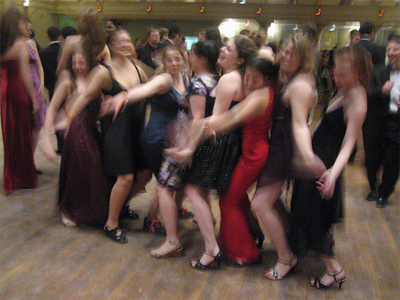To start I want to acknowledge that the term “gamification” is not the subject of this post even though it is the buzz term these days. So before going further let me explain why I think the term is misleading.
When used as a noun, gamification implies a standardized design process and I don’t think one exists for implementing game design that enables relationships in social business. I prefer to follow Jane McGonical’s use of the term gameful to reinforce the point that the spirit of games rather than the mechanics is most important in designing for what makes experience playful, especially in collaboration. I do use gamification in the context of other people’s discussions though. In additon, I use the verb gamify to imply an activity.
Don’t Gamify Wild Bill discussed the importance of designing for voluntary play in serious games. Playfulness is the baseline requirement for any game designed to provide useful indicators for gauging individual and organizational successes over time.
The qualifier over time is the key point to keep in mind. Specifically, those interested in gamifying employee engagement in social business, and who also aim to effectively use collaboration, must optimally design for emergence not just competition and cooperation as guiding principles.
To echo the position taken by many game designers on the subject of gamification, you can’t simply add game mechanics to employee participation in business processes and expect voluntary engagement by players over time.
Emergence and Play in Social Flow
In his classic analysis of Man, Play and Games Roger Caillois noted of game players that “above all it is necessary that they be free to leave whenever they please, by saying: ‘I am not playing any more’.” Indeed, the same point is at the heart of Jesse Schell’s recent characterization of games as problem solving situations people enter into because they want to.
Most game theorists attribute the pleasure in playing a game to the experience of flow, initially outlined by Mihaly Csikszentmihalyi. However, if there is anything game designers know it is that, for the playful nature of a game to persist as an engaging experience over time, new challenges must emerge that players recognize as part of the game and choose to engage in their play. Those challenges are often designed into games to guide players from novice skills to higher levels and this appears as a theme in many applications of game mechanics to business relationships.
However, as Ben Kirman shows in his Emergence and Playfulness in Social Games, players can also improvise such emergent challenges by taking advantage of gaps in design that allow them to alter the rules of play for their own purposes rather than remain constrained by the design challenges from game mechanics (such as badges, points, etc.) that direct players to level-up. The point brings the importance of social flow (not the company) to the forefront of discussion on how to design for gameful collaboration. Or as Stowe Boyd recently discussed, how to get the right group chemistry.
With a few exceptions that I’ll discuss in ensuing posts, not enough people involved in the gameful design of business processes are considering how their efforts relate to social flow. I plan to revisit the concepts of social flow, gameful design and collaboration in future posts so please stay tuned.


